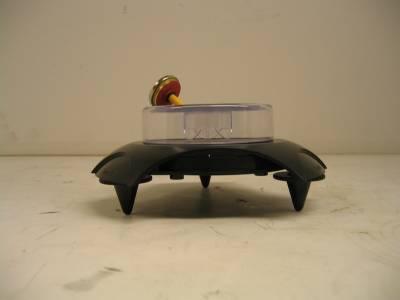Levitron
Description
A 'Levitron', a plastic toy with a spinning magnetic top, a plastic base with a few magnets embedded inside and adjustable feet, and a plastic riser. Box contains a set of weights that can be added to the top and a manual.
Purpose
Earnshaw's Theorem (essentially) says that it's not possible to make any stable arrangement of magnets such that they are held in equilibrium by only their electromagnetic interactions. This means that it is not possible to levitate magnets with only magnets. With a stabilizing element such as the rotation of the top, however, it's possible to levitate for a time.
Apparatus
- Levitron
Setup
The included manual details how to set this demo up. Be sure to practice this demo ahead of running it, as it's a bit tricky and you need to have a 'feel' for how to run it.
The weight rings have to calibrated to be within 0.1 g of the required weight such that the magnet won't be pulled down by gravity but will have enough mass to sustain precession in the magnetic field. Get the top spinning on the plastic lift plate and slowly lift it off the magnetic base. If everything is fine, the top should slowly lift itself and continue spinning suspended in the air.
Notes
The manual has a very helpful flowchart but here are the key helpful points: - If the top doesn't lift itself, reduce the mass. - If the top lifts off but flies away, raise the leg closest to where it flew off. Adding mass might also help.
This page has some interesting information regarding how Earnshaw's theorem relates to the problem of magnetic levitation, and what can be used to circumvent the limitation (by of course, violating the theorems assumptions).
Demo room information
| Location | O3 |
| Maker | Unknown |
| Current State | Working |
